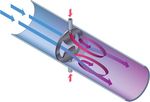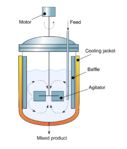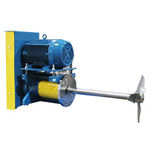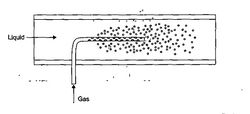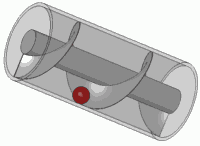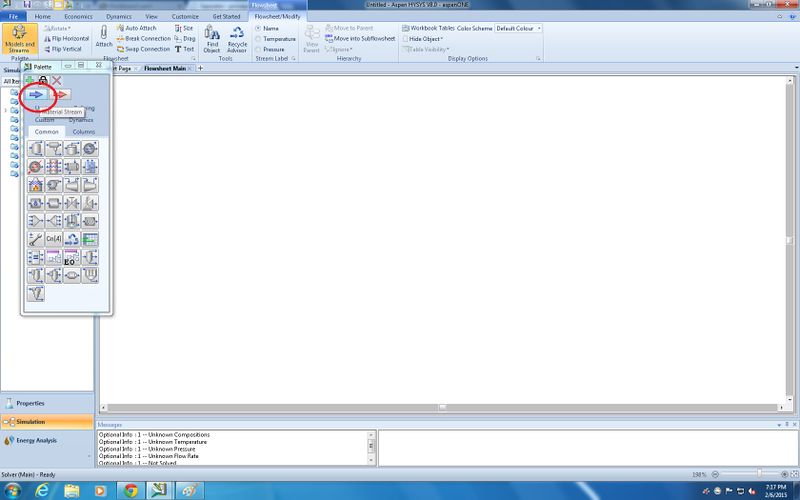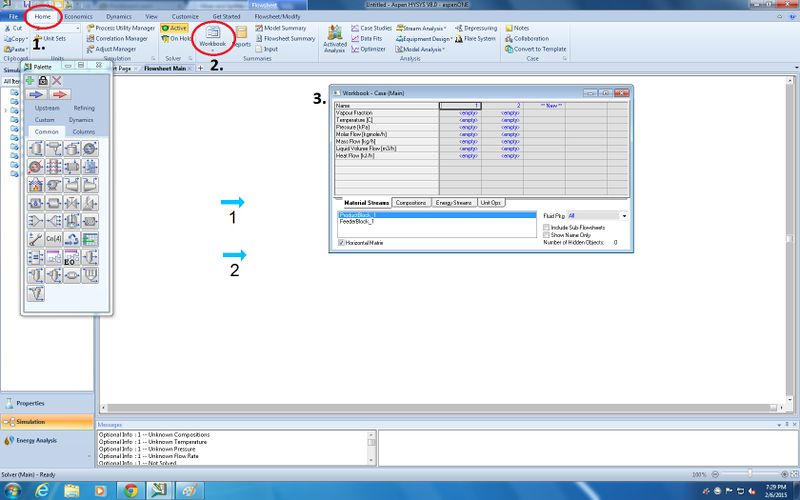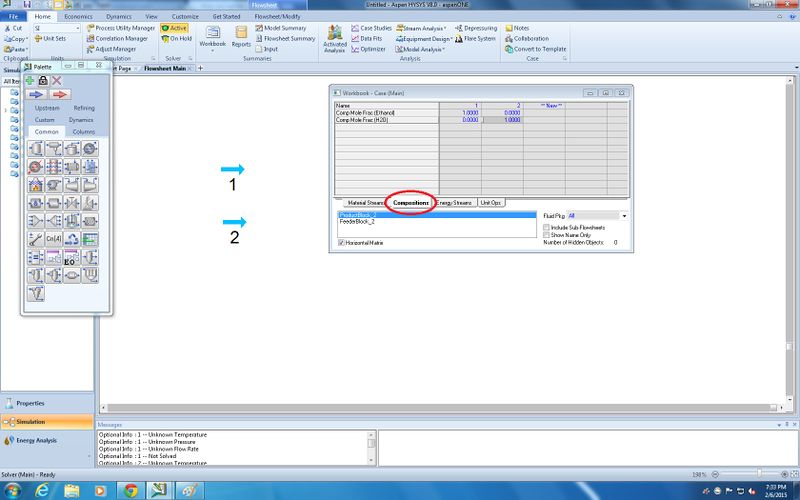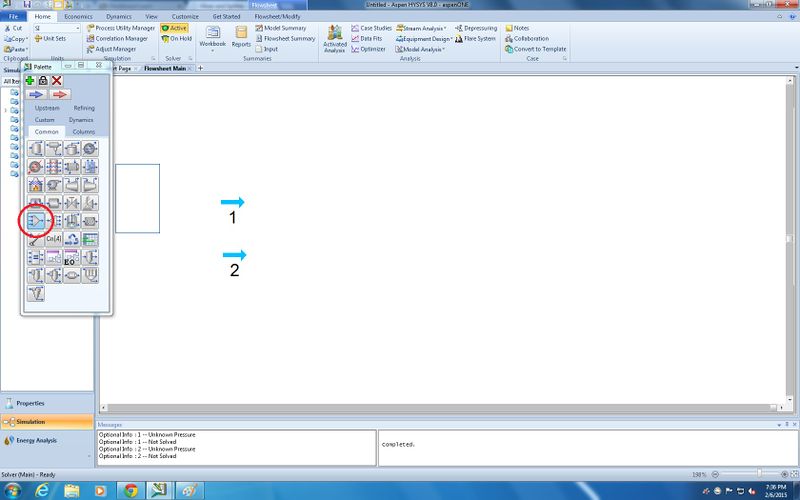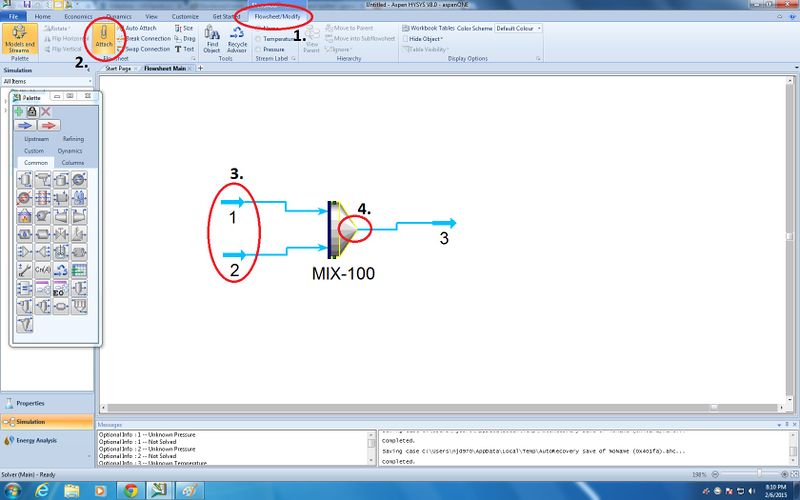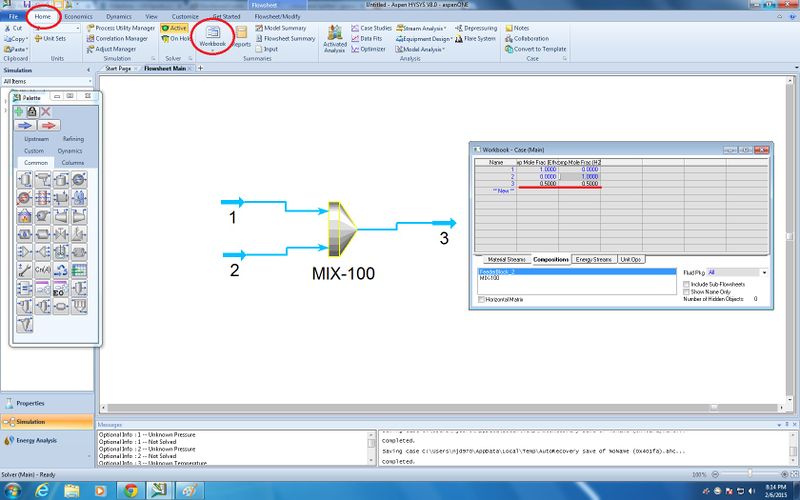Mixer and Splitter: Difference between revisions
Bassman211 (talk | contribs) |
Bassman211 (talk | contribs) No edit summary |
||
| Line 20: | Line 20: | ||
== Aspen HYSYS Version 8.0 Simulation for Mixers== |
== Aspen HYSYS Version 8.0 Simulation for Mixers== |
||
Aspen HYSYS software is an easy to use process modeling software that allows users to design efficient systems for industrial applications. HYSYS is capable of simulating many types of equipment that most industrial processes would require, including mixers. Unfortunately, HYSYS is only able to model a generic mixer, and is not able to model a specific model. The mixer used in HSYSY simulates and ideal mixing environment. |
|||
===Preparing Simulation Environment=== |
|||
[[File:material.jpg|800x800px]] |
[[File:material.jpg|800x800px]] |
||
[[File:material2.jpg|800x800px]] |
[[File:material2.jpg|800x800px]] |
||
Revision as of 23:41, 6 February 2015
Author: Nicklaus Dotzenrod [2015]
Stewards: Jian Gong and Fengqi You
Introduction
The production of products from chemical processing plants usually involve a variety of mechanical equipment. Distillation columns, reactors, heaters and condensers are some of the most prominent pieces of equipment utilized at production facilities. Mixers and splitters, however, are equally important and play crucial roles in many different types of processes.
Mixers
Mixers play an important role in many different production processes, at the beginning or at the end. Some processes require several feed streams to be properly mixed before a reaction is commenced in a reactor. Other processes require that final products are blended together. Mixers serve to achieve both of these roles. Materials in all physical states are capable of being mixed together, whether it is gas mixing, liquid mixing, gas-liquid mixing or solid-liquid mixing.
Gas Mixing
In certain processes, gas to gas mixing is necessary to produce a desire product. This type of mixing is rare, however, as gases have low viscosity making them easy to mix on there own, without the assistance of a mechanical mixer. An example of gas mixing would be the mixing of oxygen, along with other gases to dilute the oxygen to desired compositions. Usually, a long pipe that contains turbulent airflow is sufficient enough to mix gases.
Liquid Mixing
Processes that require the mixing of two liquids are very common in many industries. Several factors should be considered when determining the type of mixer needed including the degree of mixing required, if the process is a batch or continuous operation and the properties of the liquids being mixed. There are several methods by which liquid to liquid mixing can be achieved.
- Inline Mixing Inline mixers are static devices that provide a turbulent environment that
- Stirred Tanks
- Side-entering Agitators
Gas-Liquid Mixing
There are several different types of mechanical mixers used to achieve a homogeneous gas-liquid mixture. Some include inline mixers, stirred vessels and other static mixers. A special device called a sparger can be used for this type of mixing as well. A sparger is essentially an injection tube with multiple holes in it to disperse gas within a tube filled with a liquid.
Solid-Liquid Mixing
There are times when a process requires a solid to mixed with a liquid. Generally, this is due to the fact the solids are insoluble and need to be transported as a slurry. Often times, stirred tanks are used to mix these physical states. Additionally, a screw conveyor can be used.
Aspen HYSYS Version 8.0 Simulation for Mixers
Aspen HYSYS software is an easy to use process modeling software that allows users to design efficient systems for industrial applications. HYSYS is capable of simulating many types of equipment that most industrial processes would require, including mixers. Unfortunately, HYSYS is only able to model a generic mixer, and is not able to model a specific model. The mixer used in HSYSY simulates and ideal mixing environment.
Preparing Simulation Environment
References
1. G.P. Towler, R. Sinnott, Chemical Engineering Design: Principles, Practice and Economics of Plant and Process Design, Elsevier, 2012.
2. Aspen HYSYS. Vers. 8. Bedford: AspenTech, 2014. Computer software.
